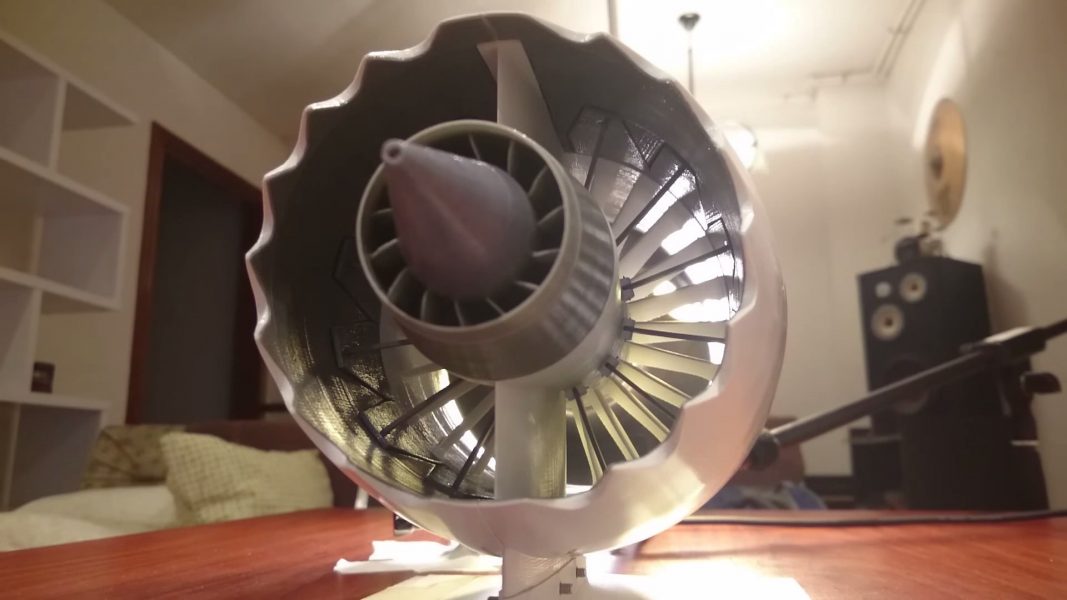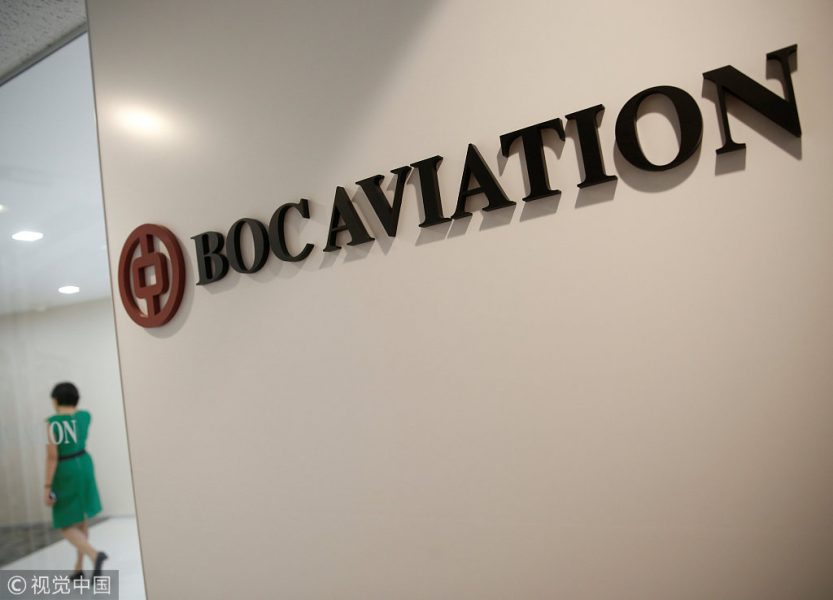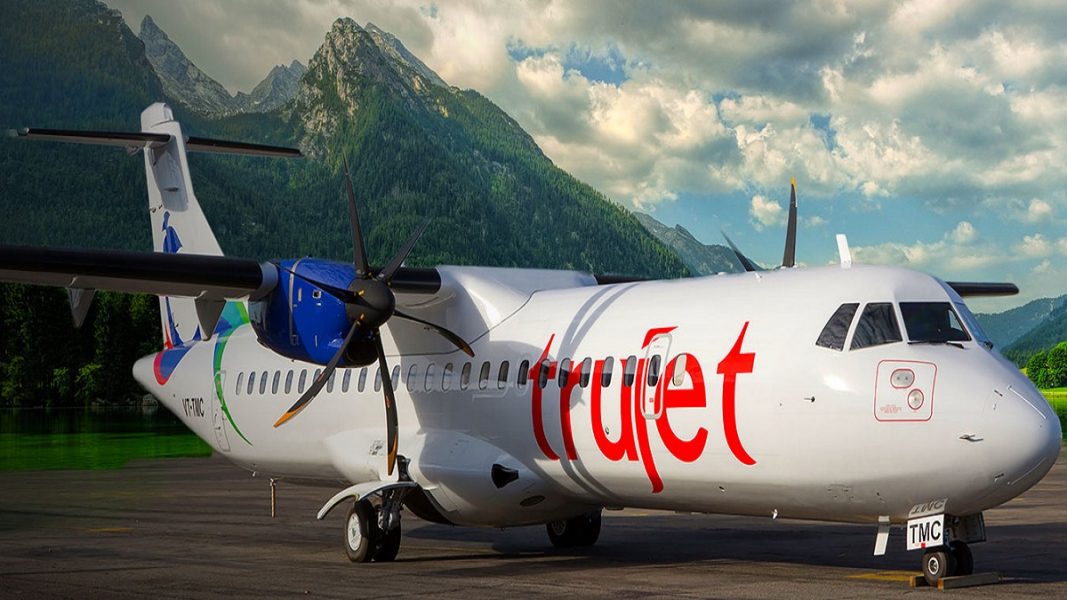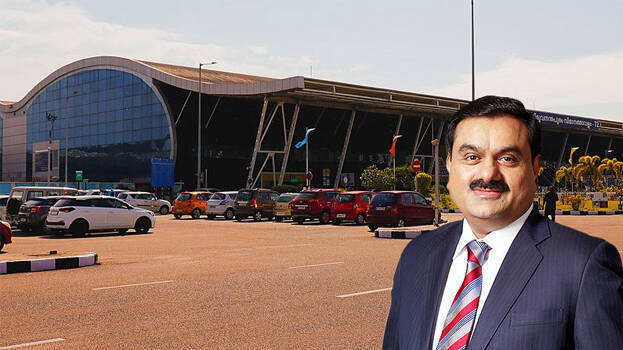SpiceJet's licence to transport dangerous commodities provisionally suspended by the DGCA
Radhika Bansal
16 Oct 2021
The DGCA has temporarily banned SpiceJet's licence for the carriage of 'hazardous commodities' due to alleged infractions. SpiceJet will not be allowed to transport dangerous products, including lithium-ion batteries, on either domestic or international flights during the 30-day suspension, according to the sources.
When contacted, a SpiceJet spokesperson did not directly mention the suspension.
The airline said there was a "minor issue" with a package being declared as a "non-dangerous goods" by a shipper, who has been blacklisted.
According to the Directorate General of Civil Aviation's (DGCA) rules, dangerous goods are articles or substances that are capable of posing a risk to health, safety, property or the environment.
"The DGCA has suspended SpiceJet's licence for dangerous goods for 30 days allegedly for violating norms involved in the handling of such cargo," one of the sources said.
As a consequence, the airline has been "barred" from carrying such cargo on its flights across the network, he said.
Director-General of Civil Aviation Arun Kumar was not reachable for comments.
"There was a minor issue with a package being declared as 'non-dangerous goods' by a shipper and the lapses were on the shipper's part. SpiceJet has taken preventive and corrective action as advised by the DGCA," the SpiceJet spokesperson said in a statement.
Read next
Pratt and Whitney's prototyping arm, Gatorworks, to 3D print an entire jet engine
Prashant-prabhakar
16 Oct 2021

The last time Pratt & Whitney’s GatorWorks attempted to 3D-print a combustor for the miniature TJ-150 jet engine, the results were less than impressive-to say the least.
Actually, it was terriblesays Dave Stagney, senior director of P&W’s prototyping arm.
The maiden attempt had been a learning experience for the team who is now taking the whole additive process a notch higher- attempting to produce a TJ-150 turbine entirely out of 3D-printed parts.
We learned a lot from it. We need to create the opportunities for our engineers to learn, and not put ourselves in a situation where the stakes are so high that we have to be so conservative that we can’t take calculated risksStagney
FlightGlobal
For now, Gatorwork's main focus is on low-cost military engines such as the TJ-150, which is used to power small cruise missiles and not the conventional, ultra-reliable turbofan engines used on fighter jets or commercial planes.The company aims to cash in on the US Air Force’s (USAF’s) growing demand for low-cost cruise missiles, powered glide bombs and “attritable” unmanned air vehicles (UAVs). After years of acquiring high-end fighter jets with ginormous prices, like the Lockheed Martin F-35 stealth fighter, the USAF now wants to incline more towards inexpensive platforms.
Gatorworks, having being launched in mid 2018, relies heavily on digital technology such as model-based systems engineering software, and the agile development method-an iterative approach borrowed from the Silicon Valley software programming.
3D printing vs Subtractive manufacturing
Significant 3D printing forecast surges to $35.6 billion | Forbes
3D printing allows for faster manufacturing of components using digital designs. This makes it possible to furnish components with geometries , impossible to create with traditional mills and lathes.
P&W thinks it can consolidate the TJ-150’s number of parts from 400 to about 6
TJ-150 | PBS Aerospace
TJ-150 is a 150lb-thrust (0.667kN) turbine engine that powers the Raytheon Miniature Air-Launched Decoy, a low-cost cruise missile intended to confuse enemy air defence systems.It also powers the MBDA Spear air-to-surface missile, which is to be fielded on the UK Royal Navy’s carrier-based Lockheed Martin F-35B fleet.
3D printing an engine has its own set of advantages. Besides cutting the process costs in half, it also saves a considerable amount of time as opposed to when subcontracting the work to outside entities.
Right now, if we want to do an iteration, we’ve got hard tooling that’s about a 12-month lead time. If we can do additive, we can eliminate that lead time and print new configurations in a couple of weeksStagney
Furthermore, rotating parts are the most difficult because of the high stresses and dynamics those parts experience-he added.
If all goes well, the 3D-printed TJ-150 should be ready to roll by the end of the year.
David Stagney | GovCon wire
If it doesn’t work, well, we’ll do another (s)printStagney
COVER: Softpedia
Read next
For an undisclosed sum, Megha Engineering & Infrastructures Ltd (MEIL) has returned ownership of cash-strapped TruJet to its former owner Vankayalapati Umesh. On October 9, Umesh took over as Managing Director, even though the majority of TruJet's board of directors had left.
In an e-mail to the airline's staff, Umesh stated that Ireland-based turboprop aircraft lessor Elix Aviation Capital is interested in becoming an equity partner as well as leasing 10 aircraft, two of which are available immediately.
(Image Courtesy - Airways Magazine)
Turbo Megha Airways Private Limited was incorporated on March 14, 2013, with Vankayalapati Umesh as the promoter. In 2014, he sold a majority stake in the airline to Hyderabad-based Megha Engineering and Infrastructures Limited to fund their operations.
The carrier’s new MD confirmed to Business Line that he is in the process of restructuring the airline.
According to a report by Hindu Business Line, Vankayalapati Umesh said -
“I am at advanced stages of discussion with entities for institutional funding and to raise funds for the airline and I believe to be able to conclude the same in the next three months.While it impacted in a huge cash outflow for the parent company, MEIL realised that this was not part of its core business functions and wanted to handover the airline business to someone capable and keen on its safekeeping and continuous expansion.I am at advanced stages of discussion with entities for institutional funding and to raise funds for the airline and I believe to be able to conclude the same in the next three months.Our existing lessor, Elix Capital, is also keen on leasing 10 aircraft to us with two aircraft immediately. They also want to be equity partners in the airline and will bring in value by way of aircraft induction and their global relationship in the aviation industry.MEIL has put its faith and trust in me to run this airline and has transferred the company to me."Vankayalapati Umesh
A spokesman for MEIL declined to respond. A source close to MEIL's promoters, on the other hand, verified that the airline had been sold to Umesh.
Turbo has been looking for an investor for six months and has been unable to find one. Interups' Laxmi Prasad stated that he would invest in the company. However, he has yet to pay any money to the company. TruJet and US-based firm Interups Inc signed an agreement in April under which Interups committed to buying a 49% ownership in the company for an undisclosed sum. Although the agreement was viewed as a tremendous relief for the cash-strapped airline, Interups has yet to infuse the funds as agreed.
When BusinessLine contacted Prasad to ask if he was asked to leave, he maintained that he was still a part of the company. However, when asked if he had infused the agreed funds, he did not comment.
(Image Courtesy - MouthShut.com)
Elix Aviation Capital is backed by California-based asset management firm Oaktree Capital Group, and currently owns and manages a portfolio of 65 turboprop aircraft.
Trujet, according to the MD, has been operating for 4.5 years, expanding gradually until the pandemic hit and like all businesses globally and locally, the carrier was affected by the lockdown and the severity of Covid-19.
According to a source, TruJet will need INR 300 crore immediately to stay afloat.
Founded in 2013 and beginning operations in July 2015, TruJet (Turbo Megha Airways) is an Indian low-cost carrier based at Hyderabad Rajiv Gandhi International Airport. The carrier operates a route network primarily focusing on the country's central Andhra and Telangana regions, with destinations including Tirupati, Hyderabad, Aurangabad, Vijayawada and Rajahmundry. TruJet utilises a fleet of ATR-72 aircraft. The carrier is backed by Turbo Aviation, diversified Indian aircraft maintenance and ground handling company.
(Image Courtesy - Indica News)
However, like many airlines, TruJet also buckled under COVID-related losses to the point where it had to ground most of its fleet earlier this year and risk losing its flying license. As of now, out of the carrier’s seven ATR 72, only one is in active service.
Most of the funding was slotted for the airline’s expansion, with Interups Chairman Laxmi Prasad announcing a potential order of more than 100 Embraer E190s and Airbus A220s.
(With inputs from the Hindu Business Line)
Cover Image - India TV News
Read next
The global pandemic and its aftermath | Is the worst over or there's more to come?
Prashant-prabhakar
15 Oct 2021
With festivities around the corner, and in what has come as a breather for most, the government has allowed all airlines to operate at 100% capacity from October 18. All restrictions imposed on airline operations during the covid-induced lock down have been removed. The "fare caps" however, still remain in place.Let's say for instance, a given airline has a schedule of 1000 flights per month pre-covid, and if the capacity was capped at 85%, that would mean the airline can now operate only 850 flights in a month. What that essentially means is that capacity fares have no relation to fare caps.
Recent developments
1.Highest passenger traffic in a year
In what can be termed as a first ever since the lockdown was first initiated in February of 2020, passenger traffic hit the "3 Lakh" mark when a whopping 3.14 lakh passengers flew domestic routes. The first week of October saw about 1.7 million passengers travelling which was a 10% surge from the previous month.Delhi and Mumbai- India's two largest airports have reopened terminals to further streamline the heavy flow of increased traffic.
The New Indian Express
The aviation industry is expected to witness a strong year-on-year growth of 45-50 per cent in domestic air passenger traffic and 80-85 per cent in international air passenger traffic during 2021-22ICRA
2. Elevated Load Factors
Business Standard
It is an indicator of the percentage of the available seating capacity that is filled with passengers. Ideally , a high load factor is preferred as it shows that an airline has sold most of its available seats.
the average load factor of six major airlines in August stood at 70.2% up from an average of 54% in JulyDGCA
3.Ban on international flights to be partially lifted
Getty Images
In a bid to boost the tourism sector, the government is rolling out free visas to the first 500,000 tourists and this would be applicable until March of next year.Furthermore, from October 15, India will issue tourist visas to those flying in by chartered flights, and tourist visas from November 15 to foreigners flying in by commercial flights.
4.Amended fare cap
With the current regulations in place, airlines can now set fares for travel beyond 15 days instead of 30.The move will supposedly allow airlines to roll out special discounted fares and promotional offers for the festive season, allowing in more cash flow.
5.Emergence of ultra-low-cost players
SaltSnap
"Akasa", which has very recently received the NOC from the Ministry of Civil Aviation, is scheduled to commence operations by summer of next year. With industry veterans such as former Jet Airways CEO Vinay Dube and ex-IndiGo president Aditya Ghosh onboard, Akasa is all set to go toe to toe with market leader IndiGo, and other low-cost carriers SpiceJet and Go First.
Ex Indigo CEO- Aditya Gosh | Reuters
With over 50% of the country's population being vaccinated, and the vaccination drive only gaining further momentum, the "load factor" is only expected to increase further.
With so many airlines stacking up one against the other, travellers now have a wide array of options to choose from. How the players balance between offering premium services and at the same time maintain operational standards, remains to be seen.Domestic travellers however, don't mind as long as it gets them from Point A to Point B.
As danger of a third wave still looms around, would it be safe to assume Indian Aviation is finally making a comeback?Drop in your thoughts below
COVER: Deccan Herald
Read next
BOC Aviation, Vistara's Lessor, to setup aircraft leasing office in GIFT City
Radhika Bansal
14 Oct 2021

BOC Aviation is a top-tier global aircraft operating and leasing company. Robert J Martin, Managing Director and Chief Executive Officer, has been personally involved with India since 1993.
He said on the sidelines of the 77th annual general meeting of the International Air Transport Association (IATA) in Boston that BOC Aviation is currently doing its research on setting up an office in GIFT City.
Robert J. Martin, Managing Director and Chief Executive Officer, BOC Aviation (Image Courtesy - Aviation International News)
Gujarat International Finance Tec-City (GIFT City) is an Under-construction business district near Ahmedabad in Gujarat, India. It is India’s first operational smart city and international financial services centre, which the Government of Gujarat promoted as a greenfield project, The city is located on the banks of the Sabarmati River and is around 12 km (7.5 mi) from Sardar Vallabhbhai Patel International Airport. The city is designed in such a way that residents can walk to work, and includes commercial and residential complexes.
“We will do the research and it is a matter of how long it takes under the government regulations,” he said.
BOC Aviation’s core business model is focused on purchasing new, fuel-efficient, in-demand aircraft at competitive prices, directly from aircraft manufacturers, and placing them on long-term operating leases, globally, and selling them to maintain a young fleet.
In India, BOC Aviation’s largest customer is Vistara. It has also done business with IndiGo and has a smaller exposure to SpiceJet and GoAir (now GoFirst).
In an interview with Moneycontrol.com, Robert J. Martin said that the Cape Town Convention Protocols has helped in the process of registration of aircraft for India. He said, "We were involved in Cape Town Conventions very early on. Remember, now, with the setting up of the GIFT City in Gujarat, we are in favour of this."
So far, Indian airlines have been leasing planes from lessors in Ireland, Dubai and China, among others. Earlier in February 2021, to attract foreign aircraft lessors to set up shop in India, finance minister Nirmala Sitharaman, in her budget speech, had said that aircraft leasing companies operating at the GIFT City will be eligible for tax exemptions and other benefits.
When asked about looking to set up something at GIFT City, he responded that they may look up and are doing their research which probably goes on till next year. It is just the beginning.
When asked about leasing of aircraft in India and the leasing cost he said that they buy an aircraft into an entity in India and lease it to airlines in India. They need to check about the leasing costs. "We need to understand all the state and provincial tax laws," Mr Martin said.
Replying to the comparison of Indian Tax laws in GIFT City with those in Ireland where most of the aircraft are leased from, he said "the taxes are favourable but the key question is what will be the cost to fund the entity in GIFT City. Generally, when we lease an aircraft, we borrow our funding in US dollars in the international market. The question is: can we do the same in a vehicle in GIFT City? That is the kind of research we need to do."
GIFT City, Gujrat (Image Courtesy - DNA India)
Talking about the Indian market, he remarked "There is huge potential. The key question is how you can fund the vehicle in India, which is going to own the aircraft in India. When we do financing, for example, in Singapore, we raise our money in the international bond market. There are some difficulties with that in India. At the moment, the market is not liquid enough. That is something which we are looking at before we decide to come to India."
Replying about the controversies with some of the airlines with which they have leased aircraft and have had to take them to court, he said "In the leasing business, when you get to a point where you are not paid, what you would do is that you will take your aircraft back and lease them to another customer. Actually, we have been to court only once in India. That was a long time ago, in the early days of SpiceJet. In the end, we came to a settlement. The only other time people have generally been to court is when they have had difficulty in getting their aircraft out after they have terminated their leases. But it is a better situation today than 10 years ago."
When asked about why the lease deeds are all signed abroad when Indian airlines decide to acquire an aircraft they are not signed in India. He replied that leasing is normally based on either English law or New York law. So, it is perfectly normal for the leasing business to sign deals abroad.
(Image Courtesy - Reuters)
BOC Aviation Limited is an aviation leasing unit headquartered in Singapore, with regional offices in London, UK, Dublin, Ireland, Tianjin, China and New York, USA. The company was wholly owned by the Bank of China.
The BOC Aviation portfolio is one of the youngest in the leasing business with an average owned aircraft age of under four years. The fleet is primarily based on the popular Airbus A320 family and Boeing Next-Generation 737 series as well as the Embraer 190/195 family. It also includes select widebody types, such as the Airbus A330 and Boeing 777. Besides direct orders with manufacturers, BOC Aviation also grows its fleet via purchase and leasebacks with airlines. They offer a wide range of lease management and aircraft finance services, both directly and through its indirect parent company Bank of China.
(With Inputs from the interview taken by Mr Ashwini Phadnis for moneycontrol.com)
Read next
The Adani Group has taken over the operation, management, and development of Thiruvananthapuram's international airport, proclaiming it a "Gateway to Goodness."
The business titan said in a tweet announcing the formal takeover of the airport that it was privileged to serve and welcome passengers to God's Own Country.
"Connecting lives with cherished travel experiences, we are pleased to share that #ThiruvananthapuramAirport is now a #GatewayToGoodness. We are privileged to serve and welcome passengers to God's Own Country filled with lush greenery, beautiful beaches, and exquisite cuisine", the group said in the tweet, both in English and Malayalam, past midnight on Thursday, October 14.
https://twitter.com/TRV_Airport_Off/status/1448356749438685185
Despite opposition from both the ruling LDF and the opposition UDF to handing over the airport to private players, the group took over operations.
The Kerala Assembly unanimously passed a resolution last year protesting the airport's privatisation. Kerala Chief Minister Pinarayi Vijayan had criticised the Adani group's takeover of the airport, saying it was done to protect the interests of monopolies rather than for the development of the facility.
The Thiruvananthapuram International Airport is the first of the state's four airports. The Airports Authority of India, which was founded in 1932, owned and operated the airport.
(Image Courtesy - The New Indian Express)
Under a 50-year concession agreement with the AAI, Adani Thiruvananthapuram International Airport Ltd (ATIAL), a wholly-owned subsidiary of Adani Enterprises Ltd, will now operate, manage, and develop the airport.
The Adani Group, which is building the Vizhinjam international seaport in Thiruvananthapuram district for INR 7,525 crores, won a competitive bidding process for the 89-year-old airport in February 2019. The GMR Group and the state-run Kerala State Industrial Development Corporation (KSIDC) were the unsuccessful bidders.
The per-passenger fee payable to the AAI was quoted by Adani Enterprises Ltd at INR 168.
Cover Image - Kerala Kaumudi




Comment